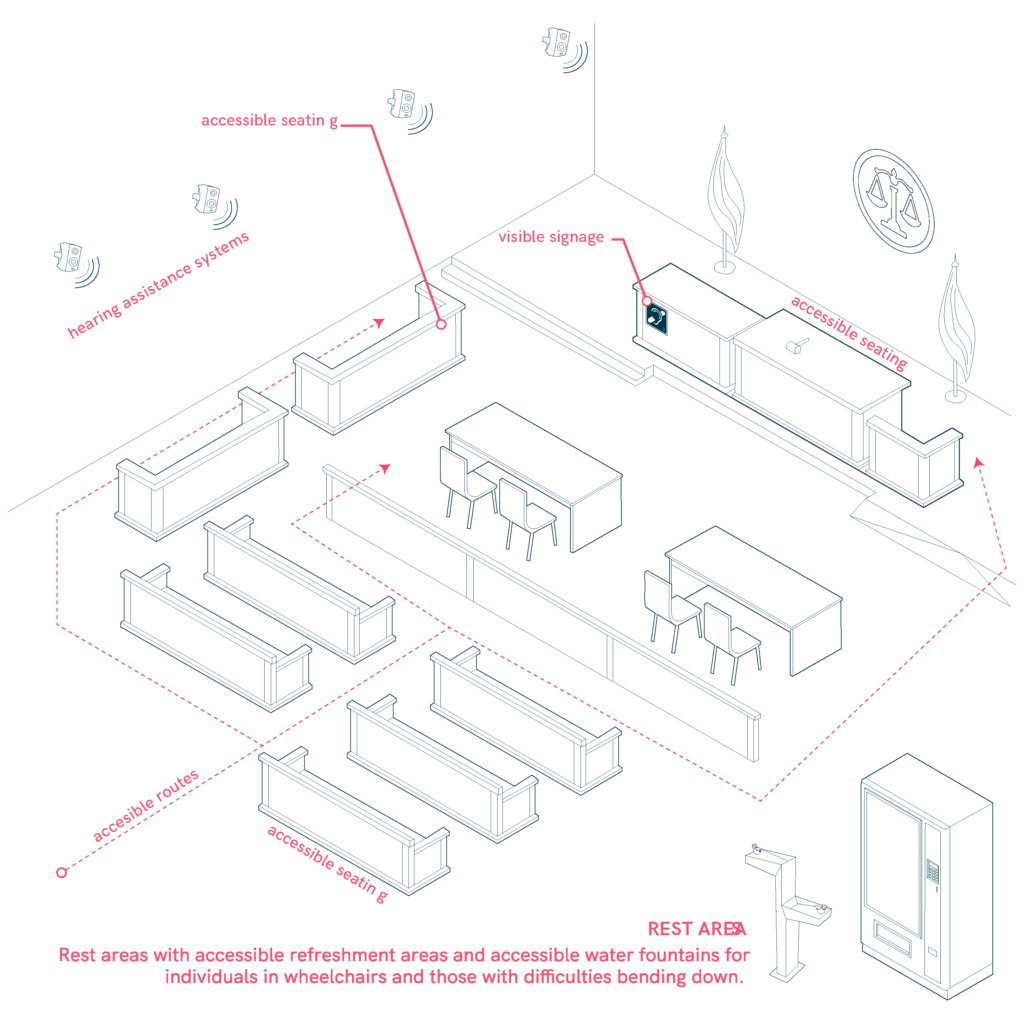Courtrooms
Judicial facilities must ensure that all areas, from judges’ benches to jury and litigant spaces, are accessible to everyone. This includes barrier-free routes, adapted seating for the press and audience, and hearing assistance systems in courtrooms. It is also essential that break and deliberation areas are equipped with accessible furniture and services, such as dispensers, adapted kitchens, and water fountains designed for various needs.

- Accessible routes to all areas, including judges’ benches, jury spaces, and litigant stations.
- Accessible seating for the press, audience, and jurors, ensuring that all fixed seating areas are inclusive.
- Installation of hearing assistance systems in each courtroom with visible signage indicating their availability.
- Accessible routes to deliberation and rest areas.
- Rest areas with accessible refreshment areas, including dispensers and adapted kitchens.
- Accessible water fountains for individuals in wheelchairs and those with difficulties bending down.
Sources
- https://accessible-eu-centre.ec.europa.eu/content-corner/digital-library/en-172102021-accessibility-and-usability-built-environment-functional-requirements_en
- https://www.access-board.gov/adaag-1991-2002.html#purpose
- https://observatorio2030.com/sites/default/files/2024-07/HABITATU%20-%20Guia%20para%20cruzar%20los%20limites%20de%20la%20normativa%20-%20CAST.pdf
- Carers
- Children
- Cognitive
- Cognitive abilities
- Decolonial perspective
- Digital
- Digital barrier
- Enviroment
- Environmental
- Gender and generations
- Gender perspective
- Hearing impairment
- Low-education
- Low-income
- Older people
- Other
- Physical abilities and features
- Sensory and Physical
- Socioeconomic
- Visual impairment